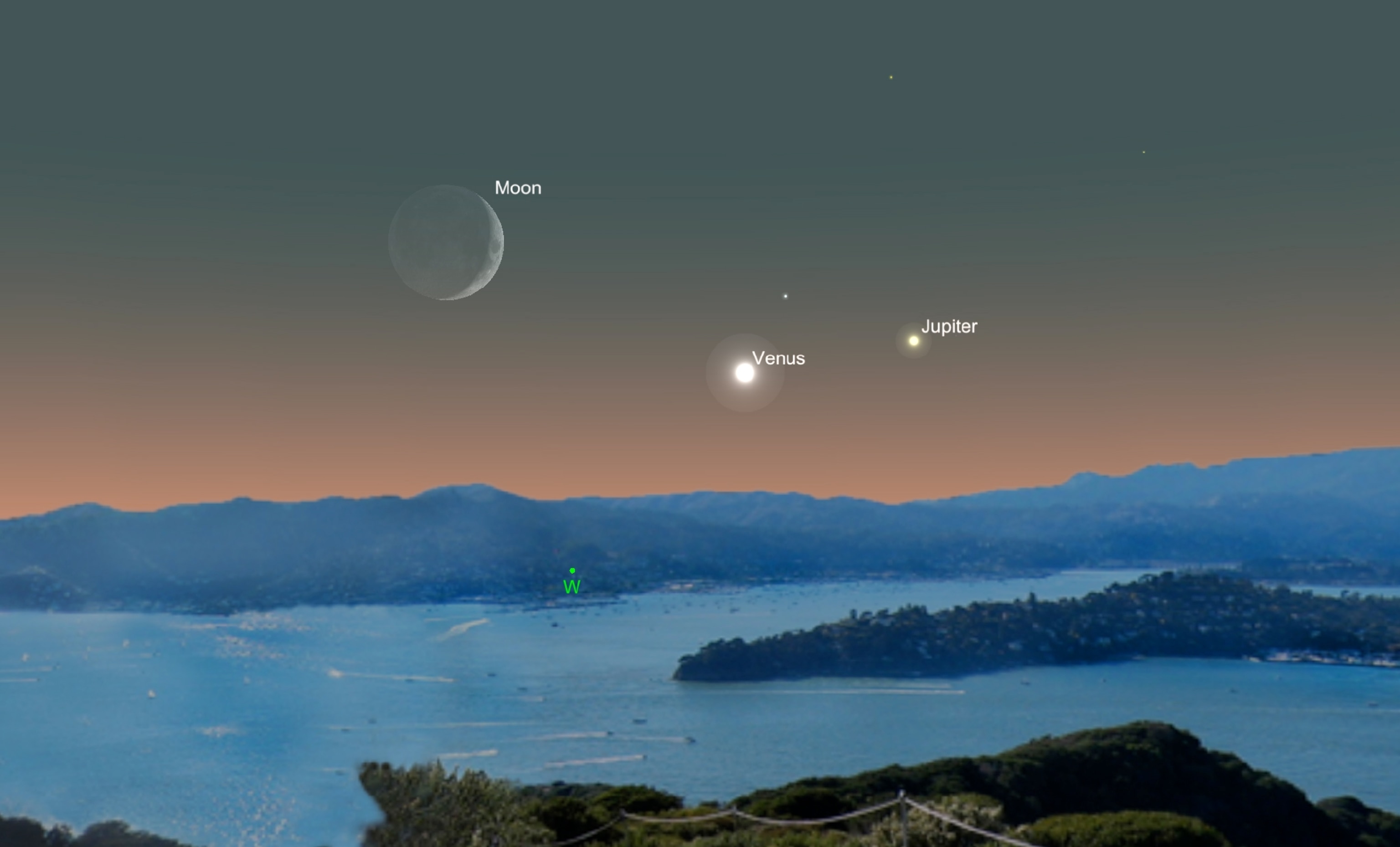
From Space, Astronaut Snaps Photo of Planets Aligned
Scott Kelly caught the moon, Earth, Venus, and Jupiter in a row from his perch on the International Space Station.
American astronaut Scott Kelly, who is on a one-year mission on board the International Space Station (ISS), has become a real shutterbug. His cosmic snapshot of Earth and its neighboring worlds may be his most impressive work yet.
Social media has been buzzing since July 19th when Kelly, on his 114th day in orbit, captured the above portrait of a crescent Earth, seen in the top of the star-filled frame, along with the brighter points of light of Jupiter, Venus and our own moon aligned below.
While the highly reflective Moon, which is some 250,000 miles away, is the brightest of the stellar trio, Jupiter appears as the faintest due its enormous distance from Earth —about 370 million miles.
Skywatchers on the ground the same day got to witness the same astronomical spectacle in their western sky after local sunset.
Unfortunately, while both Jupiter and Venus have since moved too close to the sun to be visible in August, we can still spy on the high-flying laboratory, which is making very bright flyovers across large regions of North America during the overnight hours.

Cruising 17,000 miles per hour at an altitude of about 280 miles, the space station looks like a brilliant star to the naked eye due to its highly reflective metallic modules and solar panels. Seen from terra firma, it moves at a good trek, from the eastern to western horizon in 2 to 4 minutes. So, you’ll have to be quick when searching the skies. But, you won’t mistake it for a passing plane since the station will shine with a white, unblinking light.
When under clear skies expect it to first become visible as a faint point of light appearing near the horizon. As it climbs higher in the sky, it quickly brightens, until it enters the Earth’s shadow and disappears into the darkness of the night. When the angle between the station, Earth, and the Sun are just right, the ISS can outshine every star and planet except the Sun, the Moon, and possibly Venus. Most of the time it could be mistaken for an ordinary star, were it not zipping so quickly across the night sky.
Online prediction services—like heavens-above.com or spaceweather.com/flybys/—are your best bet for finding out when and where to spot the ISS with your own eyes. Just enter your city name or postal code, and a customized viewing table is generated that describes the direction, altitude, and specific flyby times.




